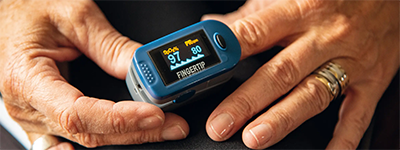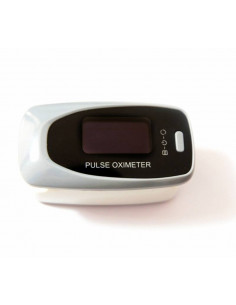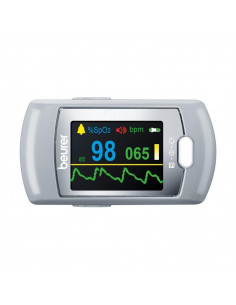
What is a pulse oximeter?
A pulse oximeter, also known as a pulse oximeter, is a medical instrument used to measure oxygen saturation in the blood. It is a useful tool to determine whether someone is getting enough oxygen. The device is usually placed on the fingertip and gives a measurement of the oxygen level in the blood, expressed as a percentage.
When should I measure my saturation?
For breathing problems: If you have shortness of breath or difficulty breathing, measuring your saturation can help determine whether you are getting enough oxygen. In sleep apnea: Sleep apnea is a condition in which breathing temporarily stops during sleep. Measuring saturation can help determine whether breathing is affected during sleep. With altitude sickness: Altitude sickness can occur when you are at a high altitude and your body does not get enough oxygen. Measuring saturation can help determine whether you have altitude sickness and whether you need medical attention. For heart and lung disease: If you have heart or lung disease, measuring your saturation can help determine whether your treatment is effective and whether you are getting enough oxygen. With COVID-19: COVID-19 can lead to breathing problems and decreased saturation. Measuring saturation can help determine whether you may have COVID-19 and whether you need medical attention.
Which pulse oximeter should I have?
Beurer pulse oximeter
The Beurer oximeter is one of the most popular oximeters on the market. It is an easy to use device suitable for home use. It measures oxygen saturation and heart rate and clearly displays this information on the display. The Beurer pulse oximeter is also compact and portable, making it easy to carry.
Contec 50D pulse oximeter
The Contec 50D oximeter is a more advanced oximeter with additional functions. It has a high-resolution OLED display and can measure oxygen saturation, heart rate and perfusion index. The device also has a memory function to store and analyze measurements. The Contec 50D pulse oximeter is suitable for professional use and home use.
Frequently Asked Questions
A pulse oximeter can give accurate readings if used properly. It is important to follow the manufacturer's instructions and properly position and use the oximeter.
Yes, pulse oximeters can also be used on children. Special children's versions are available that are designed to fit smaller fingers. With each specification of the oximeters you will find whether they are suitable for children.
How often you use your pulse oximeter depends on your specific needs and health condition. Consult a medical professional for advice on how often to use your pulse oximeter.
The oximeter display usually shows oxygen saturation (expressed as a percentage) and heart rate. Some advanced pulse oximeters can also display the perfusion index and other measurements.
It is not recommended to use a pulse oximeter on patients with nail polish or artificial nails, as these may affect the measurement. It is important to keep the fingers clean and free of nail polish and artificial nails when using a pulse oximeter.











